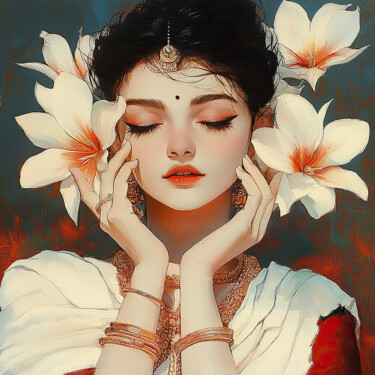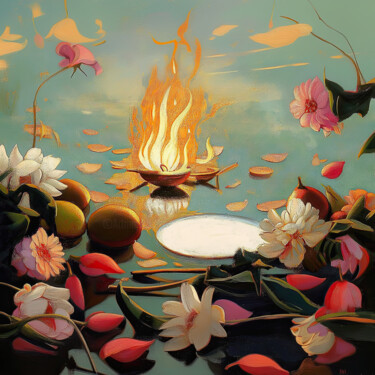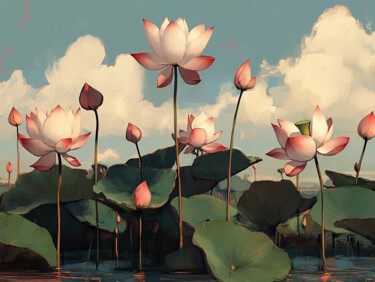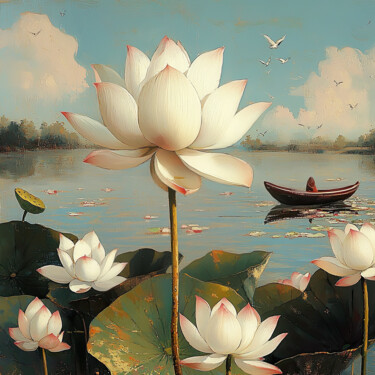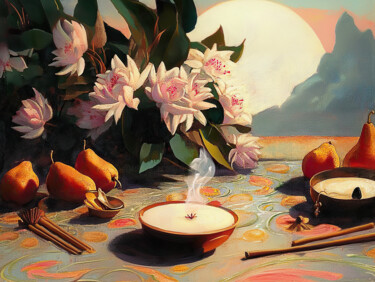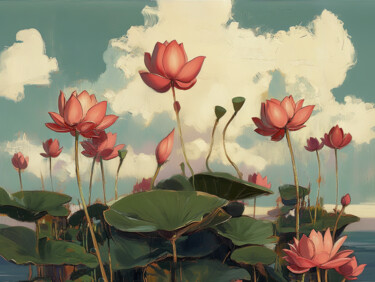Margaryta Alfierova
BackLotuses of Tirumala
The wet clothes clinging to the skin, the warm heaviness of raindrops, the shimmer of ritual flames on the wet stone tiles. On the canvases, scenes of puja come to life, where offerings to the gods—floating fruits and fresh lotuses—drift in the water. Everything around is soaked in moisture. It feels as if nature and the elements themselves are participants in rituals that never end. Here, the ritual is the very structure of life. The scents of wet earth, flowers, and incense intertwine in a si1
The wet clothes clinging to the skin, the warm heaviness of raindrops, the shimmer of ritual flames on the wet stone tiles.
On the canvases, scenes of puja come to life, where offerings to the gods—floating fruits and fresh lotuses—drift in the water. Everything around is soaked in moisture. It feels as if nature and the elements themselves are participants in rituals that never end. Here, the ritual is the very structure of life. The scents of wet earth, flowers, and incense intertwine in a single breath with the temples of Tirumala.
The portraits of Lakshmi in this series highlight the connection between everyday life and the divine. Her image appears alongside familiar ritual elements: in the reflections on the water, in the soft glow of candles, in the petals of lotuses. Lakshmi becomes a part of the overall atmosphere, blending into the scenes as naturally as rain blends into the landscape.
"Lotuses of Tirumala" is a memory frozen in paint. An attempt to convey the elusive—the soft light of candles dancing on the water's surface, and the deep calm that comes when rain becomes a part of prayer.
On the canvases, scenes of puja come to life, where offerings to the gods—floating fruits and fresh lotuses—drift in the water. Everything around is soaked in moisture. It feels as if nature and the elements themselves are participants in rituals that never end. Here, the ritual is the very structure of life. The scents of wet earth, flowers, and incense intertwine in a single breath with the temples of Tirumala.
The portraits of Lakshmi in this series highlight the connection between everyday life and the divine. Her image appears alongside familiar ritual elements: in the reflections on the water, in the soft glow of candles, in the petals of lotuses. Lakshmi becomes a part of the overall atmosphere, blending into the scenes as naturally as rain blends into the landscape.
"Lotuses of Tirumala" is a memory frozen in paint. An attempt to convey the elusive—the soft light of candles dancing on the water's surface, and the deep calm that comes when rain becomes a part of prayer.
Download
